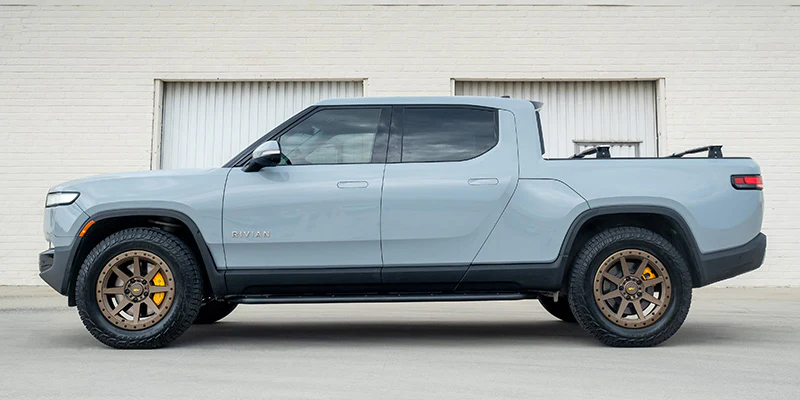In an era where electric vehicles (EVs) are racing to dominate the automotive landscape, Rivian has taken a significant leap forward with its new manufacturing hub. This state-of-the-art facility is not just a testament to Rivian’s commitment to sustainability but also a game-changer in how EVs are produced globally. According to a recent article by Reuters Mobility, Rivian’s innovative approach is set to reduce production costs by 20% while increasing output capacity. This blog will explore how Rivian’s new manufacturing hub is poised to revolutionize EV production, offering insights into cutting-edge technologies, sustainable practices, and what this means for the future of electric mobility.
A New Era in EV Manufacturing
State-of-the-Art Technology Integration
Rivian’s new manufacturing hub, located in Georgia, spans over 2,000 acres and represents a $5 billion investment. This facility is equipped with the latest robotics and automation technologies, making it one of the most advanced EV production sites globally. Some key features of this hub include:
- Automated Assembly Lines: With advanced robotics, Rivian can streamline the production process, significantly reducing assembly time and human error.
- AI-Driven Quality Control: Integrating AI technologies allows for real-time monitoring and adjustments, ensuring each EV meets the highest standards.
- Smart Supply Chain Management: Utilizing IoT and blockchain, Rivian optimizes its logistics, ensuring a seamless flow of materials and components.
This high-tech approach not only enhances efficiency but also positions Rivian as a leader in smart manufacturing.
Sustainable Production Practices
Rivian’s commitment to sustainability extends beyond producing zero-emission vehicles. The new hub incorporates numerous eco-friendly practices:
- Renewable Energy Usage: The facility is powered primarily by solar and wind energy, reducing its carbon footprint.
- Water Recycling Systems: Advanced recycling systems minimize water waste, a critical consideration for sustainable manufacturing.
- Sustainable Materials: Rivian prioritizes using recycled and sustainable materials in its vehicles, aligning with its mission to protect the planet.
These practices not only set a benchmark for the industry but also appeal to eco-conscious consumers looking for truly sustainable choices.
The Impact on the EV Market
Increased Production Capacity
With the new hub, Rivian aims to produce up to 400,000 vehicles annually by 2025. This capacity boost is critical as demand for EVs continues to surge. According to Bloomberg Green, global EV sales are expected to exceed 20 million units by 2025, and Rivian’s expanded production capabilities will help meet this growing demand.
Competitive Pricing and Accessibility
Rivian’s enhanced efficiency and reduced production costs will likely lead to more competitive pricing for its vehicles. This strategy is crucial for making EVs more accessible to a broader audience, potentially accelerating the global transition to electric mobility.
- Affordable Model Lineup: Rivian plans to introduce more budget-friendly models, appealing to cost-conscious consumers.
- Increased Market Reach: By lowering prices and increasing output, Rivian can expand its presence in emerging markets where EV adoption is just beginning.
Rivian’s Role in Global Mobility Trends
As nations strive to meet stringent environmental regulations, Rivian’s advancements align with global mobility trends emphasizing sustainability and innovation. The company’s focus on:
- Zero-Emission Goals: Contributing to national and international goals for reducing greenhouse gas emissions.
- Smart Urban Mobility: Developing EVs that cater to urban environments, supporting the shift towards smart cities.
Practical Insights for Prospective EV Buyers
How to Charge Your Rivian EV
Rivian’s vehicles are designed for convenience and efficiency when it comes to charging. Here’s how you can ensure optimal charging:
- Home Charging Solutions: Install a Level 2 home charger for overnight charging, providing a full charge by morning.
- Rivian Adventure Network: Take advantage of Rivian’s proprietary charging network, offering fast chargers strategically located for long trips.
Where to Buy and Compare Rivian Models
Rivian’s vehicles can be purchased directly online or through select showrooms. When comparing models, consider:
- Range and Performance: Evaluate the range and power of each model to suit your driving needs.
- Features and Customization: Rivian offers various customization options, allowing you to tailor your vehicle to your preferences.
What to Compare with Other EV Brands
When considering a Rivian, compare it with other leading brands like Tesla and Ford EV to ensure you make an informed decision. Key factors to compare include:
- Price and Value: Analyze the cost versus features offered.
- Customer Reviews: Look at user experiences for insights into reliability and satisfaction.
- After-Sales Service: Consider the availability and quality of after-sales service and support.
Conclusion: A Future-Ready Vision
Rivian’s new manufacturing hub is not just a facility; it’s a vision for the future of automotive production. By integrating cutting-edge technology and sustainable practices, Rivian is setting a new standard in the EV industry. As we look towards a future dominated by electric mobility, Rivian’s commitment to innovation and sustainability offers a promising glimpse into what’s possible.
Are you excited about Rivian’s new manufacturing hub and its potential impact on the EV market? Share your thoughts in the comments below! As we move forward, keep an eye on Rivian as they continue to lead the charge in revolutionizing how we produce and experience electric vehicles.

